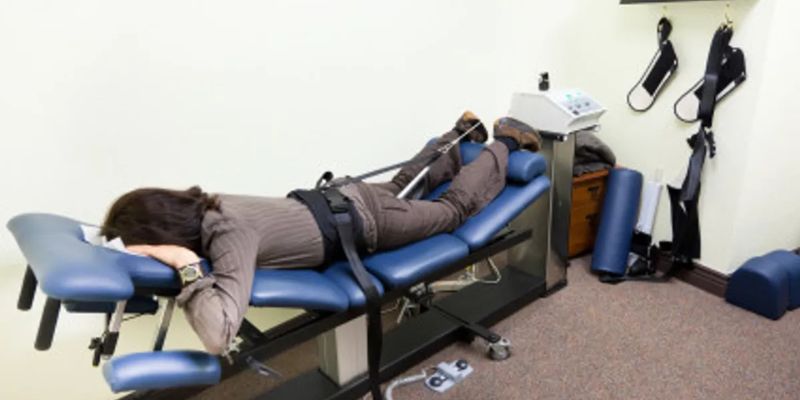Welcome to this informative article about decompressing the spine. In this article, we’ll discuss “What is a Spine Decompression and How to Decompress Spine” in depth. Our goal is to make sure you have all the information you need to make educated decisions regarding your spinal health.
Spine Decompression: What Is It?
Spinal decompression, also called spinal decompression therapy, is a non-invasive treatment for back and neck pain caused by disorders such ruptured discs, degenerative disc disease, and spinal stenosis. Decompressing the spine helps reduce stress on the spinal discs and nerves, which in turn reduces pain and improves range of motion.
When does Spine Decompression happen?
Spinal decompression helps ruptured or bulging discs retract by generating negative pressure within the discs themselves. A traction table or decompression machine are common pieces of equipment used for this purpose. The apparatus uses mild traction pressures to stretch the spine, relieving strain on the injured discs.
Spine Decompression and its benefits
Spinal decompression has several positive effects for people with chronic pain in the back and neck. The benefits of this treatment include:
- Spinal decompression can help alleviate pain by reducing pressure on the spinal discs and nerves.
- Many people who receive spine decompression report increased mobility and functionality, making it easier to return to their regular routines.
- Invasive-Free Method: Spine decompression, in contrast to surgical procedures, is a non-invasive therapeutic option with low risk and short recovery time.
- Individualized Care: The individual demands of each patient can be catered to throughout each spine decompression session.
- Potential Non-Surgical Option: Spine decompression is a non-invasive alternative to surgery for people who are concerned about the risks associated with spinal procedures.
Is Spine Decompression Helpful?
There are a number of spinal ailments that may benefit from spine decompression.
- Disc herniations
- Herniated Discs
- Disease of the discs (degenerative)
- Sciatica
- Spinal narrowing, or stenosis,
- The Syndrome of the Facet Joints
Spine Decompression Procedure
If you are experiencing back pain and are wondering if spine decompression can help, it is best to talk to a doctor.
Patients undergo spine decompression by lying on a specially designed table or equipment. The apparatus can be set to focus on a specific region of the spine in need of care. Spinal discs are decompressed by a series of moderate traction and relaxation cycles during the session. In order to guarantee the procedure’s success and safety, it is always carried out in the presence of a medical professional.
Care Post Treatment
It is crucial to adhere to your doctor’s post-treatment instructions after a spine decompression session. Exercises, dietary adjustments, and other suggestions may be included in these guidelines for better spinal health. Following these instructions will help ensure that the treatment has the greatest possible impact.
Conclusion
When it comes to relieving back and neck discomfort without resorting to surgery, spinal decompression is an excellent choice. Your spinal health is important, so it’s important to know all the ins and outs of this treatment so you can make the best decisions for it. Keep in mind that deciding whether or not spine decompression is the correct course of action for your specific illness requires speaking with a healthcare specialist.

